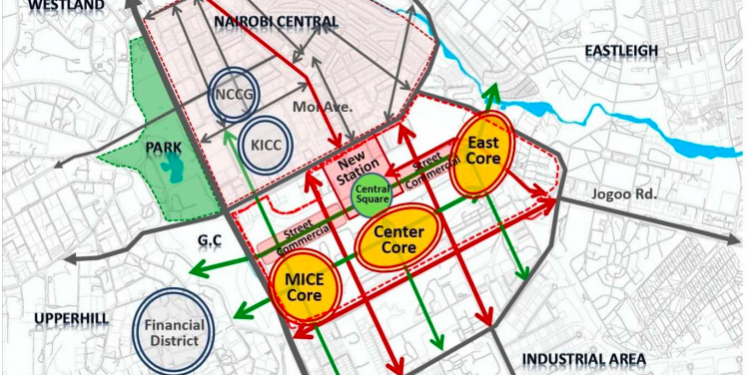Commencement of the Nairobi Railway City construction is set to kick off this year, after the formation of the RCDA (Railway City Development Authority).
This follows a directive by President Uhuru Kenyatta in March for Nairobi Metropolitan Service (NMS) to work closely with relevant institutions to establish the Authority and identify anchor projects and investors for the project.
Implementation of the plan is projected to cost about KSh27.9 billion for putting up the infrastructure for the railway city, which will include landscaping, roads & pavements, railway infrastructure, water supply, sewerage systems, telecommunications, and power.
The Nairobi Railway City project will be implemented on a 425-acre piece of land stretching from Haile Selassie Avenue, Uhuru Highway, Bunyala Road, Commercial, and Landhies Road.
The full implementation of the plan is expected to take 20 years and is divided into three phases. Phase one involves developing basic infrastructure (2020-2030), phase two for activation of the city’s economy (2030-2035), and phase three, which will allow for spontaneous development following planning and development guidelines.
The Nairobi Railway City plan includes building a new railway station that allows for the integration of BRT and other public transport modes as well as other commercial developments, including skyscrapers, residential flats, a cultural center, and a museum.
The project is divided into three components, with the first component entailing the construction meeting facilities, incentive conferences, and exhibitions, which will be located along Bunyala Road.
The next will be an economic zone comprising hi-tech industries and small and medium enterprises.
The final component, the East core, will comprise a residential complex – including a school, park, and affordable housing units – to accommodate approximately 28,000 residents. It will be built in Landi Mawe and Industrial Area.
See Also:




